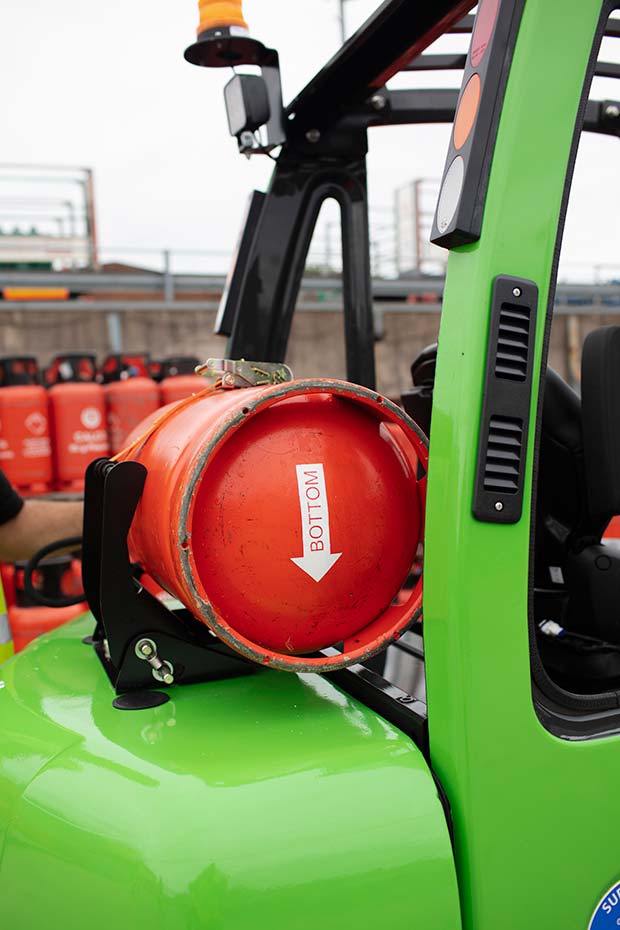LPG is a safe fuel when used and handled correctly but it is important that site managers and operatives follow the right procedures when running a fleet of FLTs using the fuel.
 With Gas Safety Week 2021 taking place from 13-19 September, Andy Kellett, National Account Manager for FLT at Calor, highlights the important considerations to ensure the ongoing safe storage, use and handling of LPG.
With Gas Safety Week 2021 taking place from 13-19 September, Andy Kellett, National Account Manager for FLT at Calor, highlights the important considerations to ensure the ongoing safe storage, use and handling of LPG.
Ensuring safe storage
When not in use, LPG cylinders should be stored upright on a solid level surface. They should also be stored outside, away from any building openings, unsealed drains or cellar access. Emergency exits should be kept clear at all times and there should be no ignition sources (including the use of mobile phones) or readily ignitable materials in the area. Using a compound or cage may also be recommended to further increase site security.
Using the correct PPE
Site managers and operatives should feel confident when replacing LPG cylinders onto the forklift truck and refuelling these vehicles and the correct PPE is a must. Long sleeved cotton overalls, goggles or face-shield, neoprene or nitrile gauntlets, and safety boots should be worn, and hard-hats or similar may also be required depending on the site.
Handling LPG cylinders
Consideration of the weight of a cylinder is also vital. An empty 18kg or 12kg cylinder (Tare Weight) can weigh between 15-30kg. When full, the cylinder will weigh between 30-45kg.
Completely empty FLT cylinders may be carried two at a time, one in each hand, with arms straight to sides. When lifting nominally empty, part full or full cylinders, they should only be handled one at time, using both hands. It is important not to overreach when placing cylinders on a stack arrangement and release one hand at a time to prevent trapping fingers.
Positioning the cylinder on an FLT
The dip tube needs to be orientated to withdraw liquid from the bottom of the cylinder to avoid it ending up in a vapour space above the liquid contents, which could cause the FLT to suffer performance issues.
Additional onsite safety measures
Vehicle protection, in the form of barriers or bollards, is required for LPG bulk tanks as FLTs (and possibly other vehicles) will be operating in the area.
As the UK’s leading LPG Supplier1 we operate a nationwide network of qualified, LPG specialist engineers, providing 24/7 emergency cover, 365 days a year, so we’re there to support you, when it’s needed most.




Comments are closed.